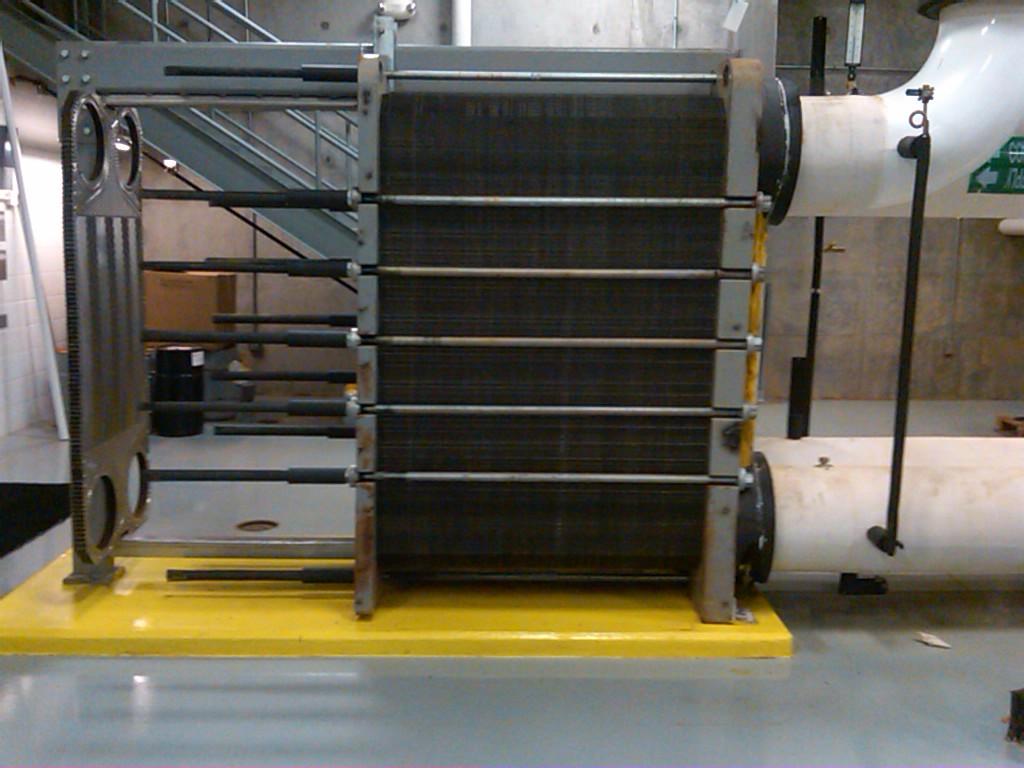In the realm of thermal management and industrial processes, heat exchangers are indispensable workhorses, facilitating the efficient transfer of thermal energy between two or more fluids. Among the diverse array of heat exchanger designs, the plate and frame heat exchanger stands out as a remarkably versatile and efficient solution, revolutionizing countless applications across various industries. This article delves into the intricate world of plate and frame heat exchangers, exploring their construction, operating principles, and the myriad advantages they offer.
The Ingenious Design
At the heart of a plate and frame heat exchanger lies a deceptively simple yet ingenious design. It consists of a series of thin, corrugated metal plates arranged in a parallel configuration and held together by a sturdy frame. This compact and space-efficient arrangement allows for a vast surface area to be packed within a relatively small footprint, maximizing heat transfer efficiency.
The plates are strategically designed with intricate patterns and channels, which facilitate the flow of the hot and cold fluids in an alternating manner. This counter-current flow pattern ensures optimal heat exchange, as the hottest portion of one fluid stream encounters the coldest portion of the other, resulting in highly efficient thermal transfer.
Unparalleled Versatility
One of the standout features of plate and frame heat exchangers is their unparalleled versatility. These devices can be tailored to accommodate a wide range of fluid types, including liquids, gases, and even two-phase mixtures. This adaptability makes them invaluable in diverse industries such as chemical processing, food and beverage production, pharmaceutical manufacturing, and power generation.
Moreover, the modular nature of plate and frame heat exchangers allows for easy expansion or contraction of the heat transfer surface area. By simply adding or removing plates, the capacity of the exchanger can be adjusted to meet evolving process requirements, providing unmatched flexibility and scalability.
Compact and Space-Efficient
In today’s industrial landscape, where space is often at a premium, the compact footprint of plate and frame heat exchangers offers a significant advantage. Their design allows for a large heat transfer surface area to be contained within a relatively small physical space, making them ideal for applications where space constraints are a critical factor.
This space-saving feature not only reduces the overall installation costs but also facilitates easier integration into existing facilities, minimizing the need for extensive modifications or expansions. Additionally, the lightweight construction of plate and frame heat exchangers further contributes to their portability and ease of installation.
Maintenance and Cleanability
Maintenance and cleanliness are crucial considerations in any industrial process, and plate and frame heat exchangers excel in these areas. Their design allows for easy disassembly and inspection, enabling thorough cleaning and maintenance procedures to be carried out efficiently.
The individual plates can be accessed and cleaned separately, ensuring that fouling or buildup is promptly addressed, minimizing downtime and maximizing operational efficiency. Furthermore, the smooth plate surfaces and the absence of intricate internal geometries facilitate effective cleaning, reducing the risk of contamination or cross-contamination between fluid streams.
Energy Efficiency and Cost Savings
Plate and frame heat exchangers are renowned for their exceptional energy efficiency, translating into significant cost savings for industrial operations. Their counter-current flow design and large heat transfer surface area contribute to highly efficient thermal exchange, reducing energy consumption and associated operational costs.
Additionally, the ability to tailor the heat exchanger’s capacity to specific process requirements minimizes energy losses and ensures optimal performance. This energy-saving potential not only reduces operational expenses but also aligns with sustainable practices and environmental responsibility.
Diverse Applications
The versatility of plate and frame heat exchangers extends far beyond their design and construction. These devices find applications in a wide range of industries, each with its unique set of requirements and challenges.
In the chemical and petrochemical sectors, plate and frame heat exchangers facilitate efficient heat transfer during distillation, separation, and reaction processes, handling corrosive and hazardous materials with ease. The food and beverage industry relies on these exchangers for precise temperature control during pasteurization, sterilization, and other thermal treatments, ensuring product quality and safety.
Furthermore, plate and frame heat exchangers play a vital role in power generation facilities, contributing to the efficient cooling and heat recovery processes in steam turbines, condensers, and boilers. The pharmaceutical and biotechnology industries also benefit from their exceptional cleanability and ability to handle sensitive materials while maintaining strict hygiene standards.
Conclusion
Plate and frame heat exchangers have emerged as a tour de force in the realm of thermal management, offering unparalleled versatility, efficiency, and adaptability. Their ingenious design, combining a compact footprint with a vast heat transfer surface area, has revolutionized countless industrial processes, enabling optimal thermal exchange and energy savings.
As industries continue to prioritize energy efficiency, sustainability, and cost-effectiveness, the demand for plate and frame heat exchangers is poised to grow. Their ability to handle diverse fluid streams, facilitate easy maintenance, and accommodate varying process requirements solidifies their position as an indispensable component in modern industrial landscapes.
Whether in chemical processing, food and beverage production, power generation, or pharmaceutical manufacturing, plate and frame heat exchangers stand as a testament to engineering excellence, combining cutting-edge technology with robust construction to deliver uncompromising performance and reliability.
As the world continues its pursuit of sustainable and efficient solutions, these remarkable devices will undoubtedly play a pivotal role in shaping a greener and more energy-conscious future for industries worldwide.


